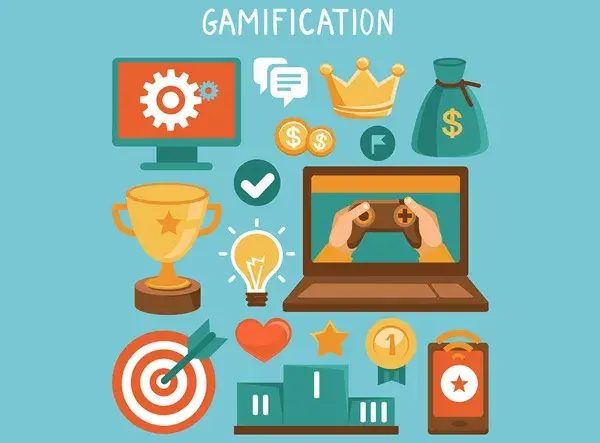When I started my journey in agile coaching, the toughest thing to do was to help teams internalize cultural changes be they a small change such as teams coming to meetings on time or transformation such as creating high performing self-organized teams. As we all know, Agile manifesto and values emphasize more on human elements. It is not easy to change behaviors. If I have been programming without writing a single test, asking me to do TDD or BDD is going to tough. Gamification can be used as a tool by scrum masters and Agile coaches to change, reinforce behaviors in a fun, engaging and non-threatening way to achieve agility. So, what is Gamification? Gamification is the use of game thinking and mechanics in non-game contexts to engage users in solving problems and drive desired behaviors. One of the core strategies is to reward players who complete valuable tasks with points and badges. Other approaches also exist, like using some game elements of competition to stimulate employee performance, or making some tasks more like games (by adding a narrative, for example). “Agile gamification” refers to the use of game mechanics and rewards in an Agile software development setting to increase team engagement and drive desired behaviors. How to start:
1. Define your target behaviors (based on business goal)
- What behaviors as a team do you want?
- What activities can we simulate?
In my scenario, when I started coaching, the organization said that they have been doing agile i.e doing all agile ceremonies, but you do not see the signs of agile teams ex. When you look at stand up boards nothing is updated, almost everyone is coming to meetings almost 15 min late
2. Build or customize the games as per the needs that you defined
- There are many websites and tools available handy for the coaches to determine the games or tools required (Reference is given below).
For my problem of transformation, first I wanted to create a visibility of their teams and we designed a game called “Bond Olympics” where teams were scored based on certain factors. It is like Olympics where each country medals are tallied at the end of the day. The Board was displayed at the entrance and updated every day. Each team chose its own name and we had scoring on different parameters (defined as per target) such as timeliness or backlog quality. The teams that won got ribbons/plaques hanging in their team space to create a festive atmosphere. That also created friendly competition and collaboration with other teams.
3. Run /Measure Progress
- Behaviors are usually difficult to track. It is better to get inputs/feedback from the team on the progress. Use leaderboards, Widgets etc
4. The fourth step is Inspect and adapt
- Make adjustments to the games and constantly improve the games
Lastly, create rewards (Both Intrinsic and extrinsic rewards) to motivate and sustain the momentum that is created by the gamification. I have got better outcomes using the Gamification for agile transformation and it is fun to do it. Teams enjoy and start taking ownership as we progress. You can give it a try and let us know how it goes! For more information on Gamification, you can read
- Learn more about Agile gamification at www.agilegamification.org.
- For the Win: How Game Thinking Can Revolutionize Your Business, by Kevin Werbach and Dan Hunter.)
- And reference websites
- Agile-Leagues: Open source gamification platform for gamification of agile teams
- Sugar-Kit: Training teams
- Building a continuous improvement: Metrics ecosystem with LEGO
- Tastycupcakes – list of games that can be used for everyday activities/meeting.





One Response